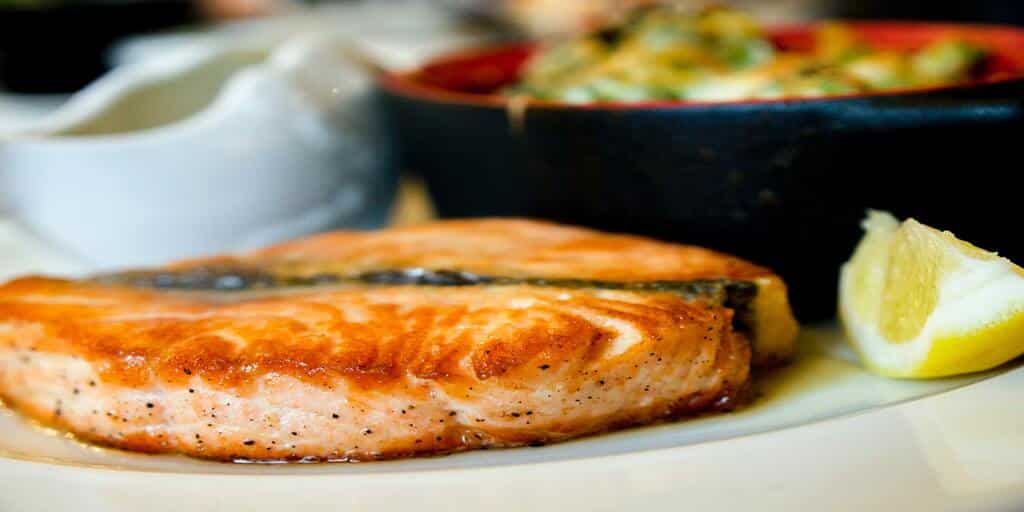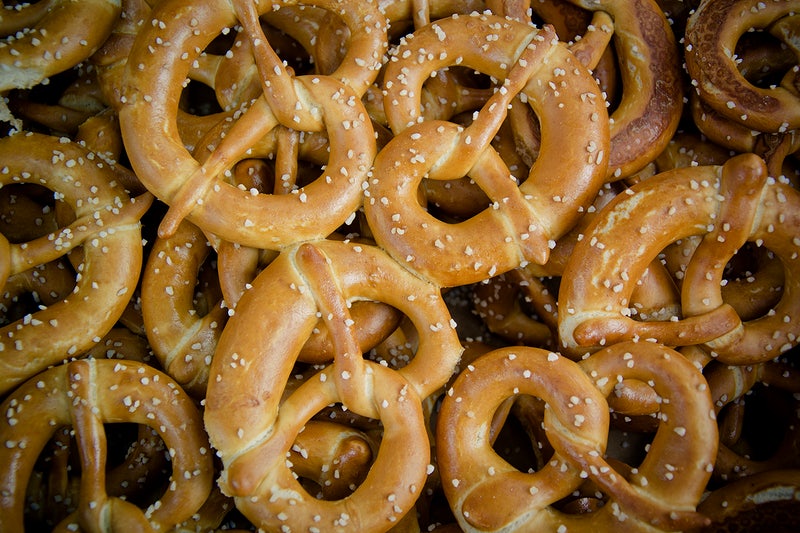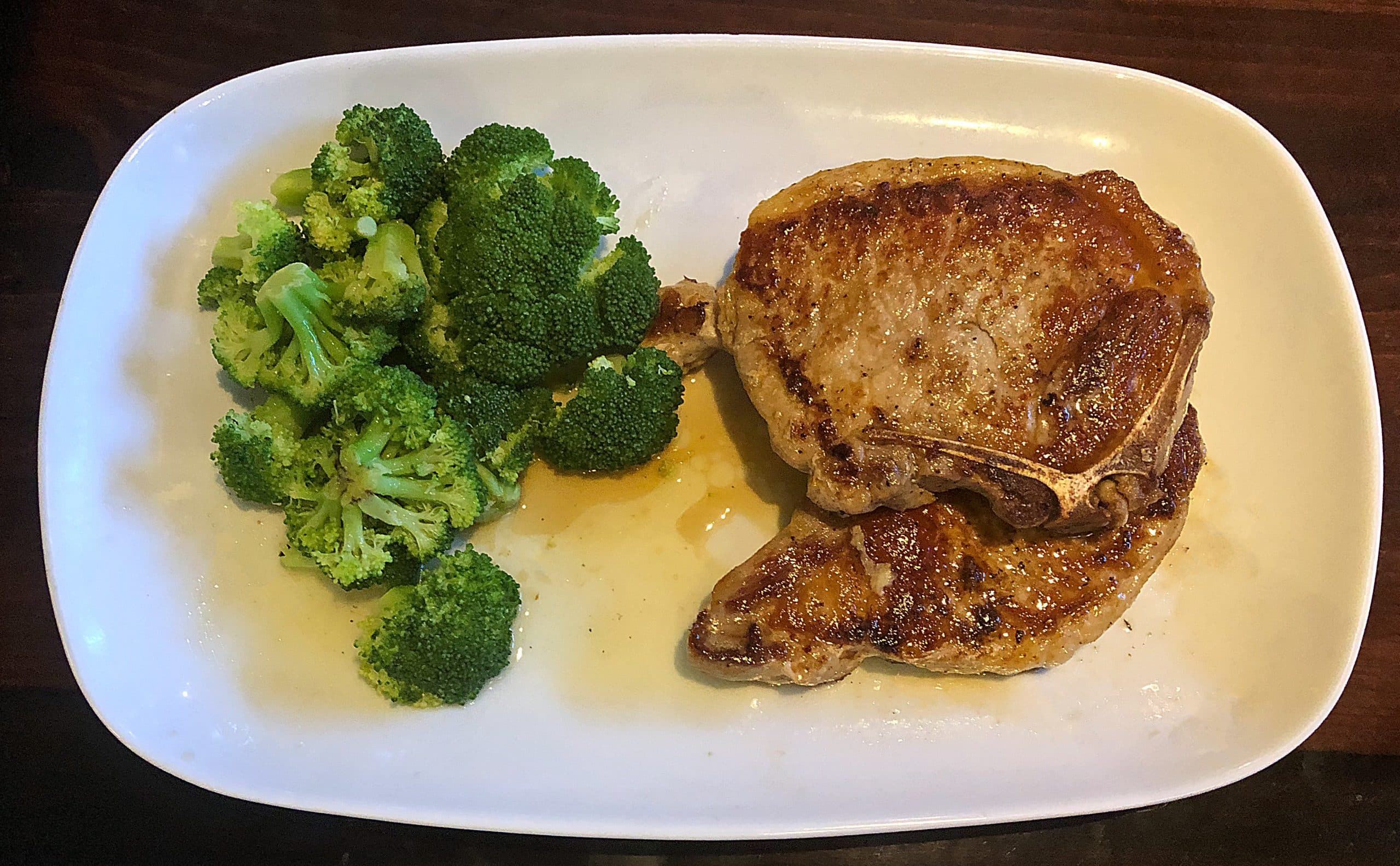Imagine walking into your favorite diner, where the delightful smell of a perfectly made omelet welcomes you as you enter.
It’s that simple egg dish that you can order in any number of ways and it always comes out perfectly cooked and fluffy.
But what exactly makes these dishes so special?
And how can you make one yourself?
This article will help answer those questions by showing you how to make a traditional Vietnamese omelette.
Learn the different types, how to flip them (or not), and what ingredients work best for making a great omelette.
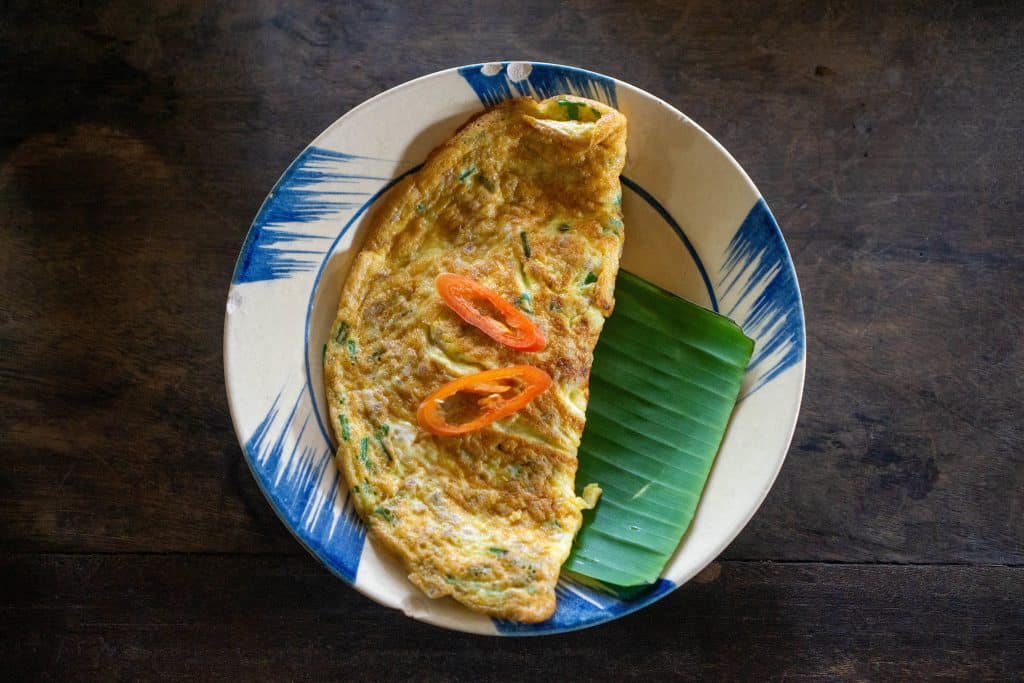
What is a Vietnamese omelette?
An omelette is a type of egg-based pancake or soufflé that originated in France.
In French cuisine, they have many names such as “omelette,” “omelette au fromage” (“omelette with cheese”), or simply “omelette.”
They’re typically made with eggs, milk, butter, flour, salt, and sometimes cheese.
The name “omelette” was popularized in English thanks to the book The Epicurean, which first published the dish in 1719.
By the end of the 18th century, both “omelette” and “omelette au fromage” had become standard terms in French cookbooks and menus.
Today, the term “omelette” is used almost exclusively in English-speaking countries.
There are still some regional variations in how omelettes are prepared across the world, but most cooks agree that the classic version consists of three main ingredients: eggs, milk, and butter.
Different Vietnamese omelettes
Vietnam has its own unique take on the omelette.
While the basic recipe is similar to other omelettes, there are a few key differences.
First, the omelette is made using only two main ingredients: eggs and vegetables.
This means that no cheese is added.
Second, unlike other omelettes, the eggs aren’t beaten before adding to the pan, instead being whisked into the hot oil once the oil is heated.
Finally, the cooking time is much shorter than other omelettes, because the eggs need to be cooked quickly to avoid overcooking them.
That said, the resulting omelette is delicious.
It’s light and fluffy, yet rich and filling thanks to the addition of fresh herbs and spices.
Ingredients
- 4 Eggs: Use the freshest eggs you have for the best texture. I like pasture-raised eggs for more nutrients and a deep orange color.
- 2 teaspoons Fish sauce: Gives a sweet, salty, umami flavor to this Asian omelet.
- 1/2 cup of Green onion and shallot: Chopped up finely for an added bite and flavor depth.
- 1 teaspoon Cooking oil: Use a neutral oil, such as vegetable, canola, or avocado oil, so you don’t impact the flavor of the omelet.
Instructions
- Scramble the eggs. Season the eggs with fish sauce, salt, and pepper. Whip thoroughly until the eggs are homogenous in color and have frothed a little.
- Mix the add-ins. Stir in the green onion, noodles, and mushroom. You can get creative at this point and add your favorite meat and veggies.
- Sweat the shallots. Heat a generous amount of oil in a non-stick pan. Add the shallots and sweat until they start to get translucent.
- Add the egg mixture. Let sit for a minute to allow the eggs to set, then use the stir and tilt method. Use your spatula or spoon to push the eggs from the edge of the pan into the center, then tilt the pan to allow the uncooked eggs to fill in the space. Lightly scrambling the eggs like this will ensure an even cook. You only need to do it circumferentially around the pan once, or else you’ll break the eggs up too much and it’ll become a scramble. Then cover the pan with a lid and let cook for 4-5 minutes.
- Flip the omelet. This part can be tricky but if you used a generous amount of oil and non-stick pan, it should be easy to flip. If the omelet is too large to flip whole, cut the omelet in half or into quarters and flip each section one by one. Cook the other side 2-3 more minutes, uncovered, until golden brown. Serve hot and top with sliced green onion.
What to serve with this omelette
A traditional Vietnamese omelette is served as a breakfast dish, usually accompanied by a side salad.
It’s also often eaten as a snack, especially when traveling.
In Vietnam, it’s common to see people eating omelettes while walking through the streets.
There are many different types of omelettes in Vietnam, including ones with shrimp, pork, beef, chicken, and even duck.
Here are a few other Vietnamese breakfast favorites:
Bánh xèo: These crispy pancakes are made with rice flour, which gives them a light texture. They can be stuffed with either meat or veggies like mushrooms and bean sprouts.
Banh cuon: These thin omelettes are filled with ground pork and served with a sweet dipping sauce.
Bún chả gà: Fried noodles topped with shredded chicken, scallions, cilantro, and chili paste.
Vuong bac: Made with minced pork and green onion, this soup is traditionally served during Tet celebrations.
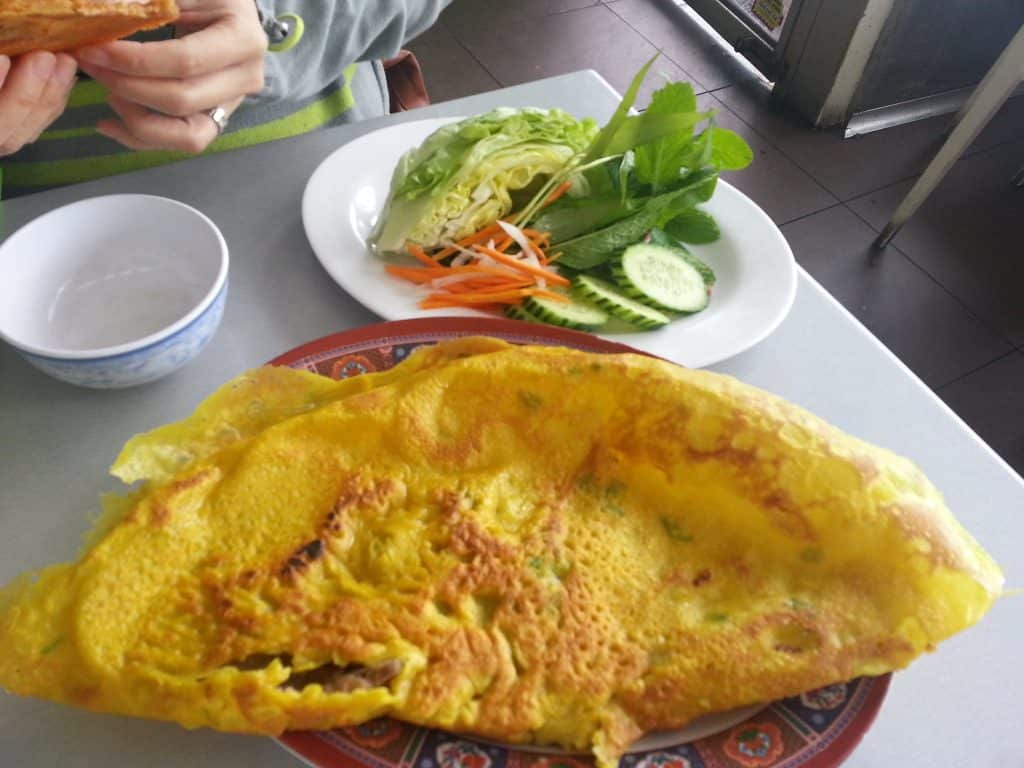
What are the four types of omelette?
When cooking an omelette, there are several options.
Each option has its pros and cons depending on the desired outcome.
Classic: This omelette is the most straightforward way to make an omelette. Simply add ingredients to the pan, heat until the eggs begin to set, then flip over and let the uncooked side cook.
Fluffy: This method uses a combination of a hot skillet and a cold pan, allowing the eggs to cook slowly without overcooking them.
Once the eggs are done, remove them from the pan and place them onto a plate. Add more butter to the pan and continue to cook the second side until golden brown.
Fold: If you want to get fancy, this is the preferred method in professional kitchens. Begin by folding the edges of the omelette toward the middle.
Continue to fold the omelette in half, creating a triangle shape. Turn the omelette around, and repeat the process again by folding the edges toward the center. Finish by flipping the folded omelette back over itself.
Crispy: This method is perfect if you want to achieve the same result as a deep fried omelette.
Begin by preparing the mixture as usual, however, after heating the pan, turn off the heat and leave the omelette inside the pan for about 10 minutes. After ten minutes, flip the omelette over and cook the other side.
How do restaurants make their omelettes fluffy?
If you’ve ever visited a fine dining restaurant, you’ve likely seen an omelette on the menu.
That’s because it’s a very popular dish in Western cuisine.
But how does a chef make a fluffy omelette?
It starts with a high-quality egg.
The recipe should call for large eggs, preferably organic.
Eggs that are too small or too old will produce a dense omelette.
Next, the eggs must be properly handled.
If the eggs are beaten before cooking, the batter will spread out as it cooks, causing the omelette to lose its shape.
Instead, chefs prepare the eggs just enough to mix and combine all the ingredients.
Then they whisk the eggs into the hot oil.
Finally, the pan temperature must be precisely controlled.
A medium to low flame will create a fluffier omelette, whereas a higher heat will give the omelette a crispier exterior.
What are the four types of omelette?
As mentioned above, a classic Vietnamese omelette contains three main ingredients: eggs, milk, and butter.
However, there are four different methods that chefs use to make them:
1) Classic: As described above, the classic omelette begins with eggs and vegetables. Then, when the eggs start to set, they are flipped and the uncooked side is finished off.
2) Fluffy: This method uses a cold pan to create a slow-cooking omelette. When the eggs reach the proper consistency, they are removed from the pan and placed onto a plate. The pan is then heated again with more butter. The second side is finished off until golden brown.
3) Fold: Similar to the Fluffy method, this technique folds the omelette to form a triangle shape. The omelette is then turned over and folded again.
4) Crispy: This style of omelette is similar to the Fluffy method, except the omelette is cooked in a pan with a lower temperature. This allows the omelette to cook faster without burning it.
Each of these methods produces slightly different results.
For example, the Fluffy method creates a thinner omelette than the Classic method.
The Crispy method produces a thicker omelette.
And the Fold method results in a triangular shaped omelette.
How do you flip an omelette?
The easiest way to flip an omelette is to grab it with tongs and flip it.
However, it’s important to remember that the omelette needs to be cooked on the first side before it can be flipped.
So don’t flip the omelette until the first side is fully cooked.
What are the four types of omelette?
1) Classic: As explained above, the classic omelette is made with eggs, milk, and butter.
2) Fluffy: This method uses a cold pan to create a slow-cooking omelette. When the eggs reach the proper consistency, they are removed from the pan and placed onto a plate. The pan is then heated again with more butter. The second side is finished off until golden brown.
3) Fold: Similar to the Fluffy method, this technique folds the omelette to form a triangle shape. The omelette is then turned over and folded again.
4) Crispy: This style of omelette is similar to the Fluffy method, except the omelette is cooked in a pan with a lower temperature. This allows the omelette to cook faster without burning it.
Which method is better?
In my opinion, the Fluffy and Crispy methods are the two best ways to make an omelette.
Both methods allow the omelette to cook evenly, producing a smooth texture.
Plus, both techniques create a fluffier omelette that is easier to flip.
However, I recommend the Fluffy method for home cooks.
It’s a bit more difficult since the omelette isn’t cooked right away.
But the final result is worth it.

Vietnamese Omelette Recipe
Equipment
- Pan
Ingredients
- 4 Eggs
- 2 teaspoons Fish sauce
- 1/2 cup Green onion
- 1 shallot
- 1 teaspoon Cooking oil
Instructions
- Scramble the eggs. Season the eggs with fish sauce, salt, and pepper. Whip thoroughly until the eggs are homogenous in color and have frothed a little.
- Mix the add-ins. Stir in the green onion, noodles, and mushroom. You can get creative at this point and add your favorite meat and veggies.
- Sweat the shallots. Heat a generous amount of oil in a non-stick pan. Add the shallots and sweat until they start to get translucent.
- Add the egg mixture. Let sit for a minute to allow the eggs to set, then use the stir and tilt method. Use your spatula or spoon to push the eggs from the edge of the pan into the center, then tilt the pan to allow the uncooked eggs to fill in the space. Lightly scrambling the eggs like this will ensure an even cook. You only need to do it circumferentially around the pan once, or else you’ll break the eggs up too much and it’ll become a scramble. Then cover the pan with a lid and let cook for 4-5 minutes.
- Flip the omelet. This part can be tricky but if you used a generous amount of oil and non-stick pan, it should be easy to flip. If the omelet is too large to flip whole, cut the omelet in half or into quarters and flip each section one by one. Cook the other side 2-3 more minutes, uncovered, until golden brown. Serve hot and top with sliced green onion.
Video
Nutrition
- 25 Healthy German Breakfast Recipes - July 5, 2025
- 25 Best Turkey Sausage Recipes - July 5, 2025
- 24 Easy Spanish Chicken Recipes - July 5, 2025

